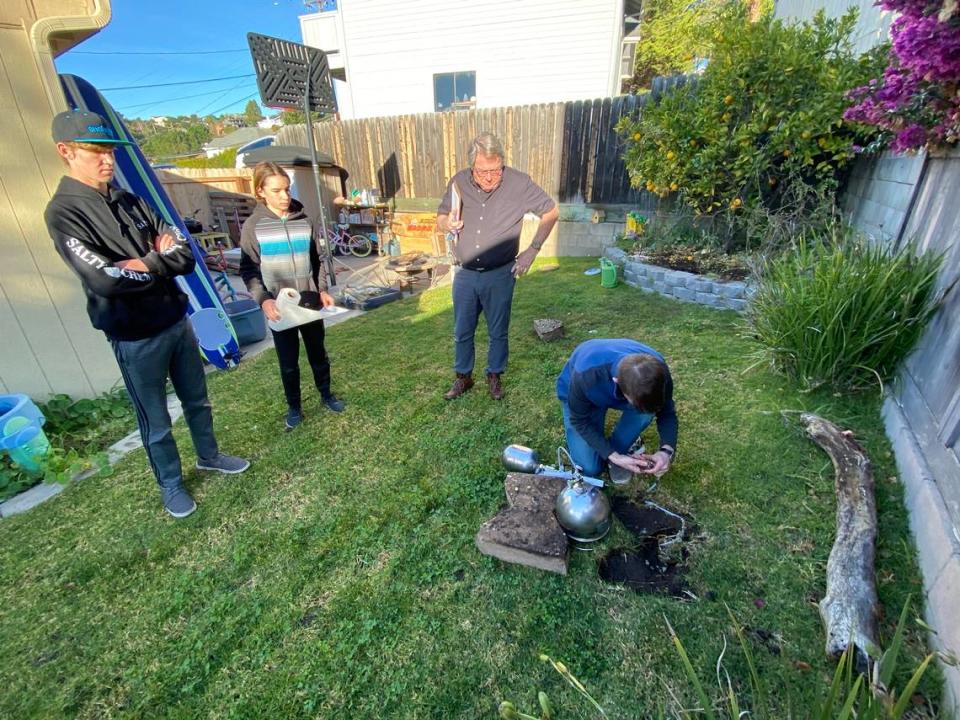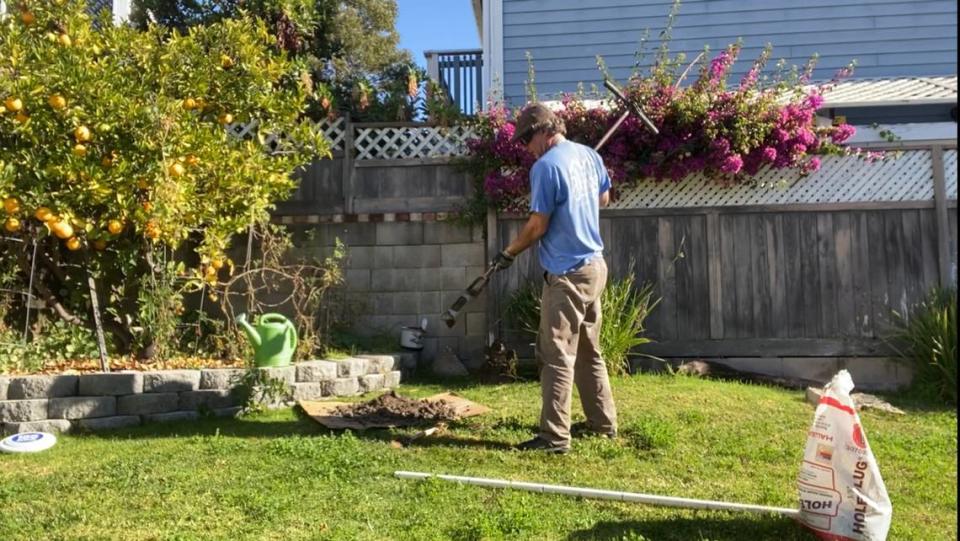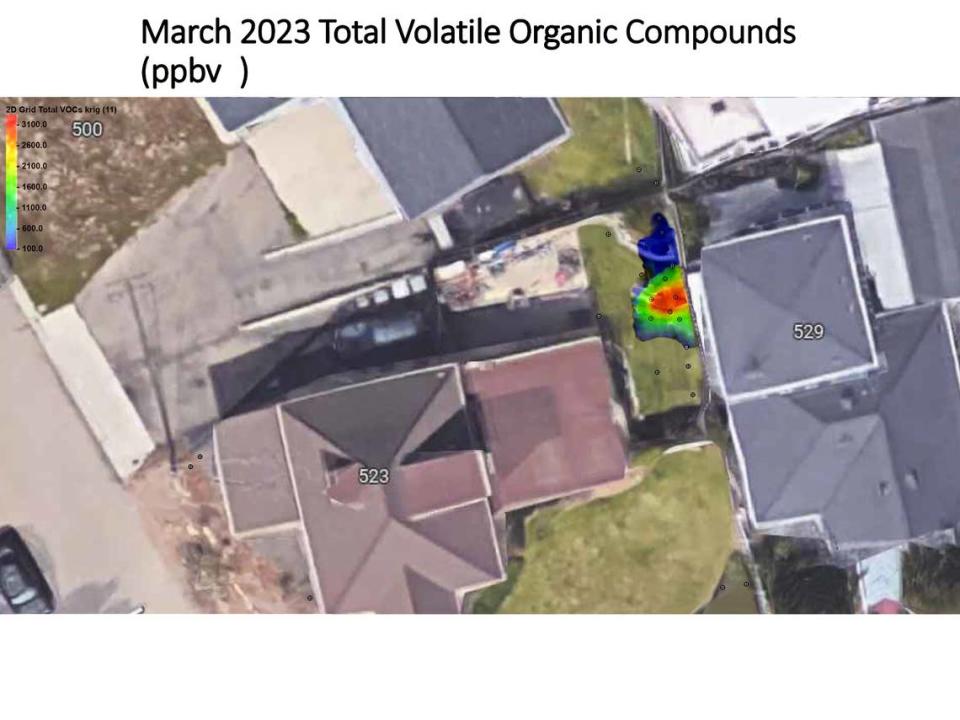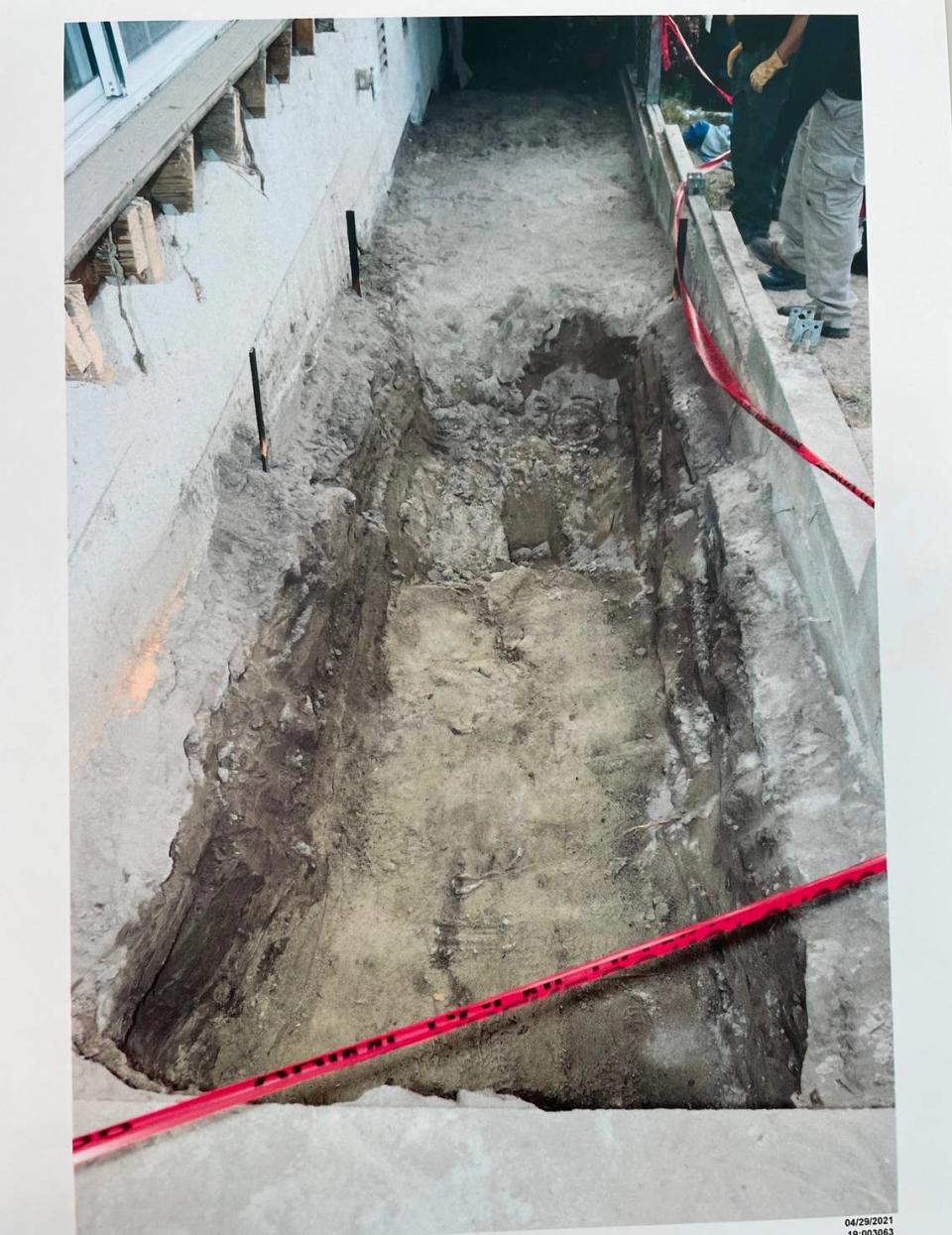Can investigators dig up Susan Flores’ yard to look for Kristin Smart? What experts say
Scientists say they have found evidence of human remains near the yard of Susan Flores, the mother of Kristin Smart’s convicted killer Paul Flores, but can investigators do anything with that information?
Susan Flores’ yard has long been theorized as a possible location for Smart’s remains — which have never been found — and the property has been searched twice, in the early 2000s.
But a study of soil vapor has led an environmental engineer, a scientist, a former FBI chemist and former prosecutor to believe they have found evidence of a “human decomposition event.”
In repeated tests, the men say they found human decomposition molecules in Susan Flores’ neighbor’s yard, concentrated adjacent to the fence between the two properties. Computer modeling of the results shows a red area that seems to spread from an area of Susan Flores’ yard that has never been searched to the public’s knowledge.
Now the big question is: Can the San Luis Obispo County Sheriff’s Office get a warrant to dig up the yard and search for Smart’s body? And if so, why haven’t they?
The Tribune posed the question to three legal experts: Cal Western School of Law professor Daniel Yeager, Loyola Marymount University Law School professor Stanley Goldman, and Arizona State University Sandra Day O’Connor Law School professor Mary Bowman to learn about the challenges and considerations law enforcement may encounter in the specific case.
Yeager and Goldman both teach criminal law and procedure, while Bowman has researched search warrants specifically in addition to teaching legal writing.
What does a judge consider when granting a search warrant?
A search warrant allows a law enforcement agency to search someone’s private property. A law enforcement officer must request a warrant from a judge showing probable cause that a crime has occurred and that there is likelihood that the requested search would find evidence of said crime.
A judge-signed search warrant would be required to dig up someone’s backyard, Yeager, Goldman and Bowman told The Tribune in separate interviews.
All three experts agreed that the biggest challenge in this case is not necessarily obtaining a search warrant, but rather successfully litigating the science that led to the warrant if anything is found.
According to Goldman, judges tend to approve most search warrants brought to them by law enforcement, while other research found law enforcement officers “judge shop” to get warrants signed off by those who are more likely to approve them.
Goldman added, however, that a judge may not be as inclined to sign off on a search warrant in a case if there is not a chance of future criminal charges.

“It’s an already solved crime with a conviction,” Goldman said. “It may be that judges aren’t as flexible when it comes to matters that are not themselves still under investigation in terms of the criminality of it.”
Susan Flores has never been charged with crimes relating to Smart’s disappearance, and it is unclear if she would be charged in the future.
There may be probable cause to obtain a search warrant with the evidence as is, Yeager said, but he added that law enforcement may want to dig the neighbor’s yard first. This would rule out any possibility of human remains being in the adjacent property, he said, and strengthen the argument for a warrant in Susan Flores’ yard. Cadaver dog alerts could also help bolster the evidence, he said.
Officers would also have to make sure the science behind the alleged evidence was sound, Yeager said.
Yeager said law enforcement officers carrying out search warrants must carefully follow the instructions and parameters of the warrant exactly because any evidence obtained outside the scope of the warrant can be thrown out.
If it’s found that the judge who signed off on a warrant made a mistake and should not have approved it, Yeager said, the evidence found would still be admissible if the officers who carried out the warrant were acting under the judge’s initial green light.
Bowman sees more challenges.

While she agreed generally with Goldman and Yeager, she did see potential issues with the fact Susan Flores’ home was searched twice, the timing of when the alleged evidence was found, and how it fits in with the prosecution’s theory of what happened.
“There could be concern about litigating the science behind it and even litigating consistency of seeking a search warrant based on this evidence as being inconsistent with other evidence that the prosecution is on record as having relied on,” Bowman said. “That might raise litigation concerns.”
Speculation about where Smart’s remains are located have circulated since the Cal Poly student disappeared 27 years ago.
The leading theory — and the theory Paul Flores was convicted on — was that at some point Smart’s body was buried beneath Ruben Flores’ deck before it was moved in early February 2020.
Bowman said a judge may look at the timing of the tests — February 2020, December 2020, August 2021, and March 2023 — and question how those test results fit in with the current timeline before considering whether to grant the warrant.
Also, because Susan Flores’ yard has also already been searched twice with nothing of note turned up, a judge may conclude that law enforcement already had its chance to search the yard.

Would soil vapor findings stand up in court?
While judges may have concerns over the science used to find the alleged evidence near Susan Flores’ yard when considering whether to grant a search warrant, Yeager, Goldman and Bowman said, issues with the science is more likely to come after the warrant is served.
The men used a soil vapor test that is standard in the EPA and in research done on human decomposition compounds.
Starting in February 2020, Tim Nelligan, an environmental engineer and owner of Katahdin Environmental Corp. in San Clemente, visited neighbor Marcia Papich’s yard four times to take samples from several holes dug 3 to 5 feet deep.
Nelligan worked with Steve Hoyt, an environmental chemist from San Luis Obispo, and the pair tested the area three more times up to March 2023. Each time, they found molecules only present when a human body decomposes. The pair later brought in former FBI chemist Brian Eckenrode and former prosecutor Tim Perry to help confirm and communicate their findings.
Perry told The Tribune that after reviewing the men’s work, “99 out of 100 prosecutors would authorize a search warrant.”
Whether a judge would also go along is unknown, because despite that confidence, this is the first time the method has been used in respect to a law enforcement case.
That could pose a problem, Yeager said, because courts are often reluctant to accept new science.
For example, he said, judges required experts to testify on how police speed radars worked in order to use their readings as evidence in traffic court for years before that evidence became widely accepted.
Furthermore, the Smart case is no stranger to scientific litigation.
In fact, the majority of the three-month criminal trial revolved around scientific disputes.
The prosecution argued there was a clandestine grave with traces of blood beneath Ruben Flores’ deck and used dog alerts for human remains to make its case, among other forensic evidence. Defense attorneys argued this evidence was “junk science” inaccurately framed to convict their clients.

Any party looking to enter scientific evidence must ensure the it meets what the courts call the Daubert Standard, or the standard judges must adhere to when determining evidence admissibility.
According to the American Bar Association, a judge must consider four things when deciding if science meets the courtroom standard:
Whether the theory can be and has been tested
Whether it has been subject to peer review
The known or expected rate of error
Whether the theory or methodology employed is generally accepted in the relevant scientific community
All of those issues could be in play in defense arguments against evidence of this type being submitted in court.
What would happen if Kristin Smart’s body was found in Susan Flores’ yard?
If Smart’s body was found in Susan Flores’ yard, the lawyers said, the prosecution would have to be prepared to argue the validity of the science and possibly how it fits into their first theory. If they cannot argue successfully, Smart’s body could be excluded from evidence.
Bowman added that if her body is found in Susan Flores yard, it could raise grounds for the defense to challenge the validity of his conviction.
“There’s a whole range of potential levels of difficulty it would pose for the prosecution, depending on sort of how all those details line up,” she said.
San Luis Obispo County sheriff’s Det. Greg Smith told The Tribune that the science the men presented amounts to a theory rather than evidence.
“My job is to either validate what they’re saying or find another expert to say that what they’re doing is correct or what they’re doing is sound science or not,” Smith said. “And that’s where we are in the process.”
The detective added that he is currently speaking with other experts in the field to determine whether the science is valid enough to be probable cause for a search warrant.
Finding Kristin Smart is a priority for the agency, he said, and his personal priority as well.

